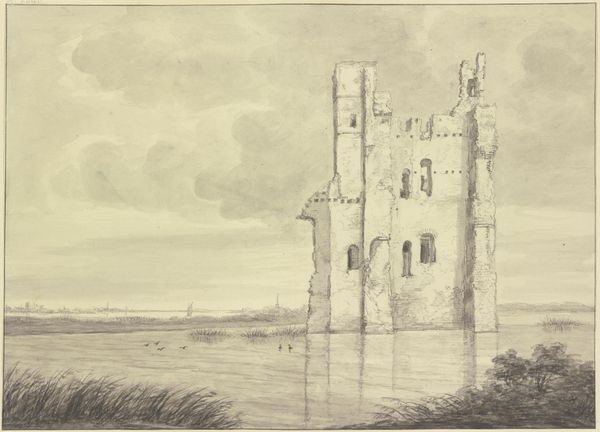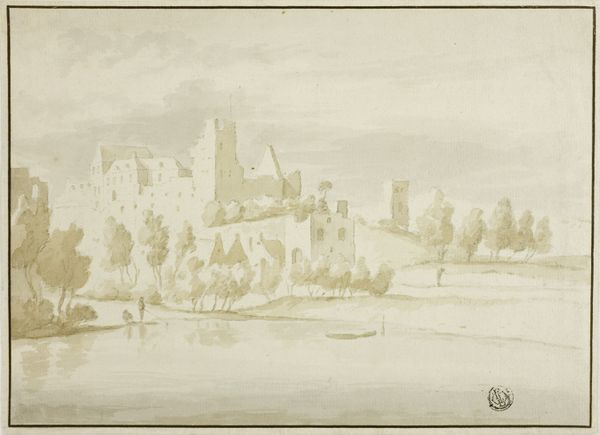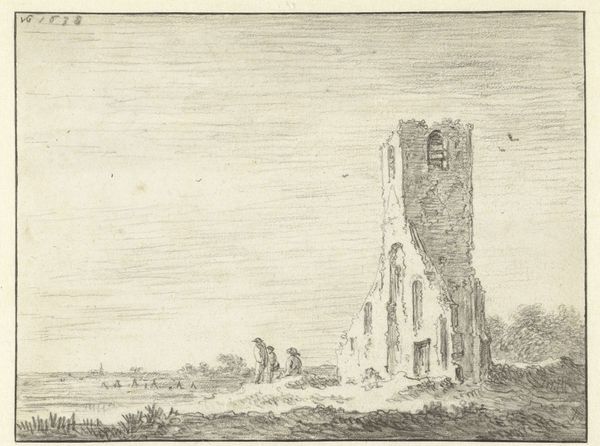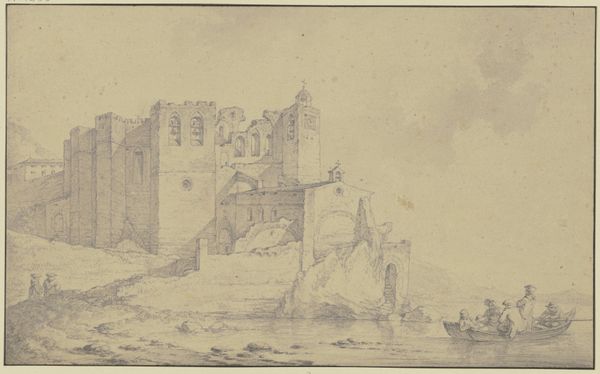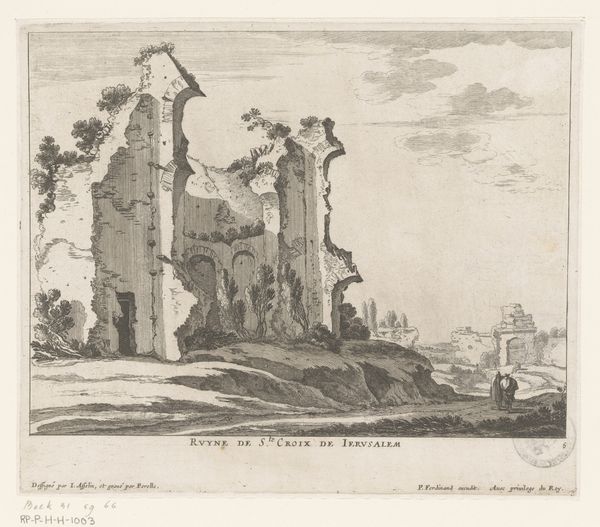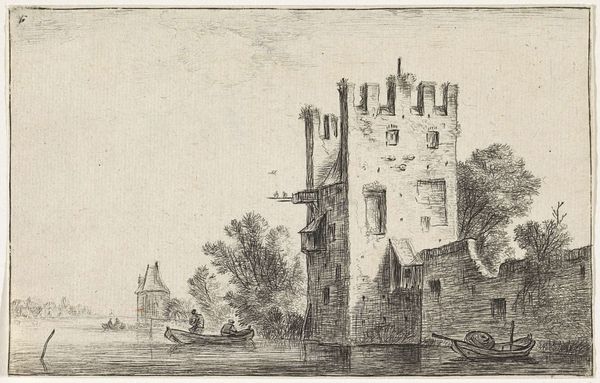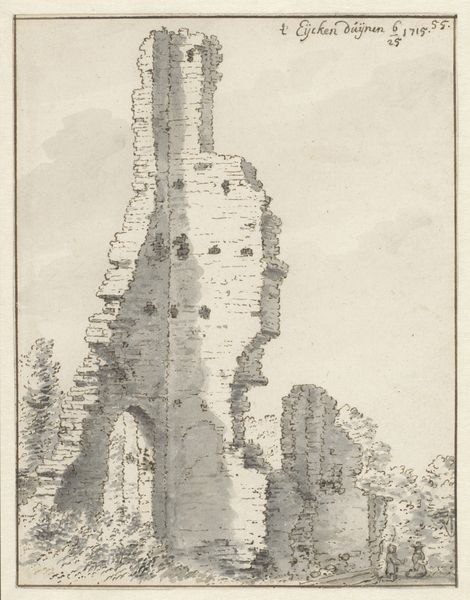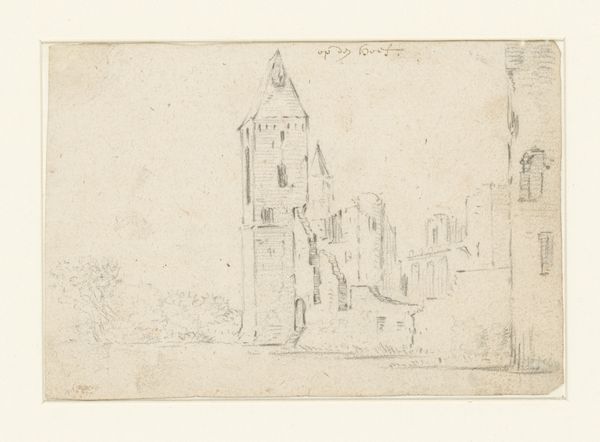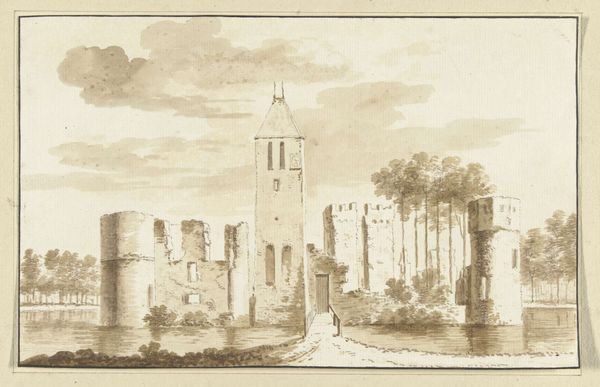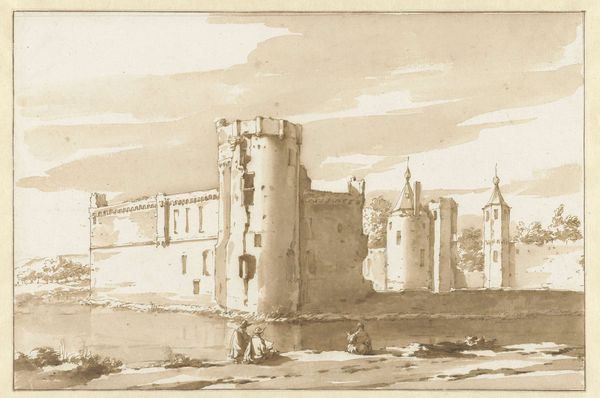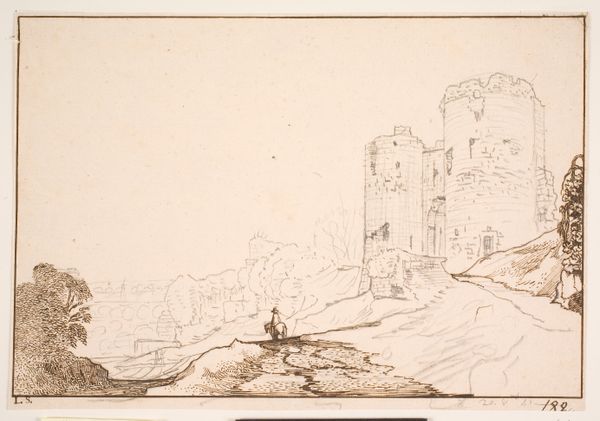
Ruins of the Merwede Manor seen from the Front with Dordrecht in the Background n.d.
0:00
0:00
drawing, print, etching, paper, ink, chalk
#
drawing
# print
#
etching
#
landscape
#
etching
#
paper
#
ink
#
romanticism
#
chalk
#
cityscape
#
history-painting
Dimensions: 154 × 242 mm
Copyright: Public Domain
Editor: We're looking at "Ruins of the Merwede Manor seen from the Front with Dordrecht in the Background," a drawing made with ink, chalk, and etching by Abraham Rademaker. It evokes such a powerful sense of the passage of time. How do you interpret this work? Curator: Formally, the piece is a study in contrasts. The dominant verticality of the ruined manor competes with the horizontal expanse of the water and distant Dordrecht. Rademaker masterfully employs hatching and cross-hatching to create depth and texture. Note the delicate balance between the detailed depiction of the ruins and the more suggestive rendering of the background. Editor: So, you see the formal elements as the primary focus? I was thinking about the narrative of decay, that maybe it shows us the futility of human ambition, but from a formalist perspective that wouldn't be important. Curator: The narrative is secondary to the compositional strategies at play. Rademaker's deliberate arrangement of light and shadow directs the viewer's eye. Consider the placement of the ruin; it occupies a visually arresting position, neither fully centered nor entirely offset. It begs the question: How does Rademaker's technique shape the viewer's experience of time and space within the artwork? Editor: I see what you mean. By emphasizing those aspects, the artwork's composition allows us to see the ruin as something almost monumental rather than just a picture of something falling apart. Curator: Precisely. By isolating the ruin through compositional means, Rademaker prompts us to consider the interplay between form and content and the aesthetic properties. Editor: This has reshaped how I perceive the relationship between visual structure and emotional impact; thank you. Curator: My pleasure. Approaching art through its inherent properties enables a deeper appreciation.
Comments
No comments
Be the first to comment and join the conversation on the ultimate creative platform.
